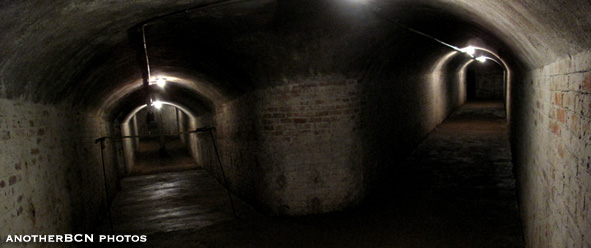Hidden under the surface of Barcelona lie many remains of the city’s history. Including about 1,400 bomb shelters built during the Civil War.
Because of its strategic position, Barcelona was the target for the attacks made by the Italian Fascist air force, which collaborated with the revolutionary forces that were fighting against the Republic. The city was one of the first places where non-military targets were bombed, attacking the civilian population. Madrid and Gernika were also brutally bombed, but while these two cities were near the front-line fighting, Barcelona formed the rearguard.
Prior to the bombings, the city council made the citizens aware of the threat and orders were given to build 30 shelters, which would not be sufficient for even 5% of the population. Everyone laughed at the first shelters because no one could ever imagine that Barcelona would be a victim of air raids. Sirens were also placed all over the city and pamphlets were issued giving instructions about what to do in the event of bomb attacks.
On 13 February, 1937, Barcelona underwent the first of the 192 attacks and when everyone realised that there were not enough shelters they began to build many more that were gradually registered. Resources were scarce and the strongest people were away fighting on the front, which meant it was mostly elderly people, women and children who were responsible for building the underground tunnels. There are records of about 1,400 shelters, although there could easily be as many as 2,000.
Most of these shelters were built using the Catalan vault (volta catalana), an architectural technique used in Catalonia to make arches stronger and wider. In this way, the passage could be wider and throughout its length there was enough room to place benches on both sides, so people could sit down whilst they waited. Usually people had to wait about two hours: the time an attack lasted and also the length of time the battery could supply electricity to the underground area. We need to take into account that during the attacks the city’s electricity was cut off, thus making it difficult for the planes flying overhead to identify their clearly marked targets, because, among other things, the aim was to destroy historical monuments in order to demoralise the citizens, create an atmosphere of bewilderment and open a new front of internal war.
Due to the lack of radars at that time (they were discovered for World War II), there were ‘lookouts’ who patrolled out at sea with the mission of observing the sky and if they saw planes, they warned the whole city. From that moment, the citizens had between one and two minutes to reach the shelter before the bombing commenced.
The tunnels had several entrances as only one would have acted as a bottleneck, especially when taking into account people only had two minutes to enter inside, and also for prevention, because in the event one door caved in, it would be possible to exit through another.
Today it is possible to visit several air raid shelters, including number 307, the Bomb Shelter (Refugi) in the Plaça de la Revolució and the one in the Plaça del Diamant.


